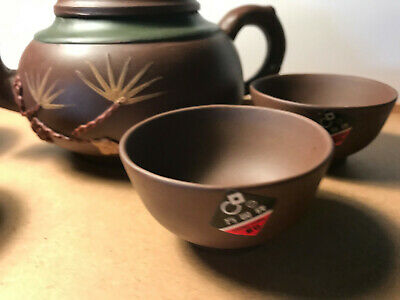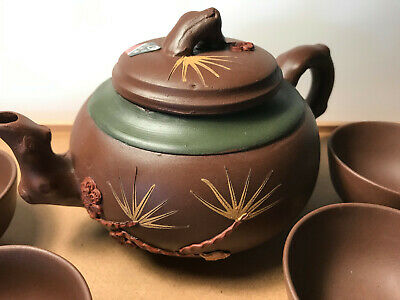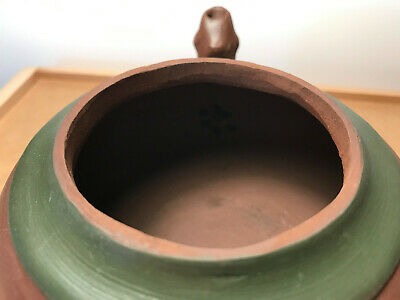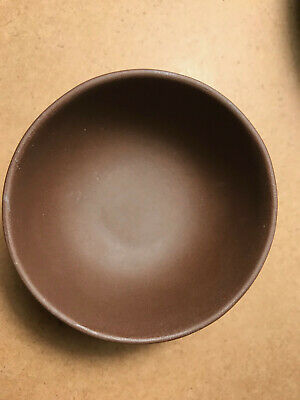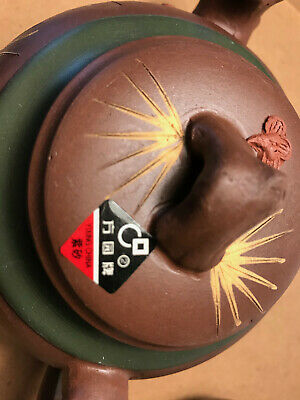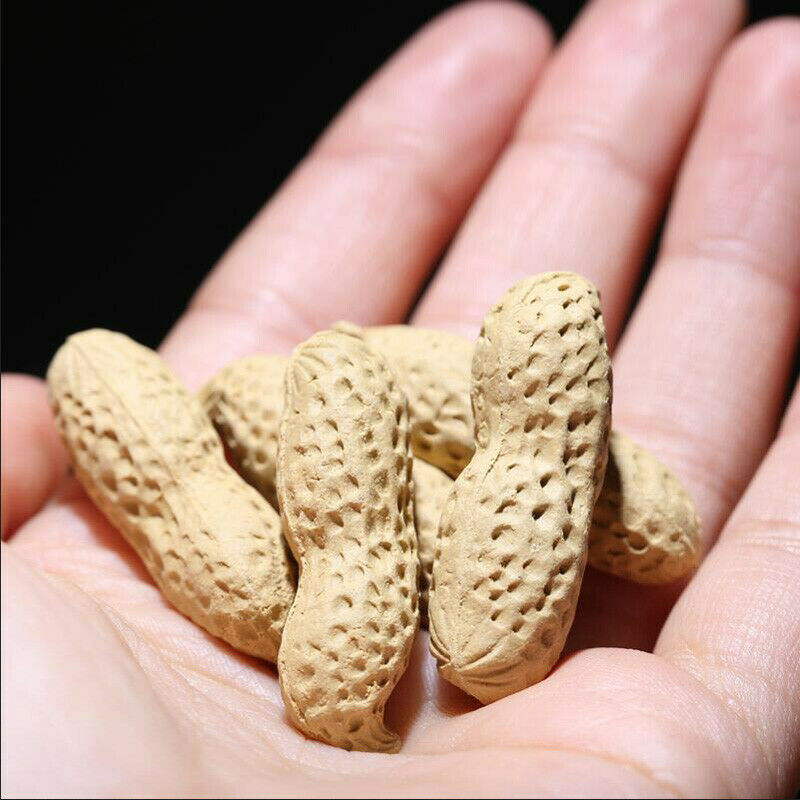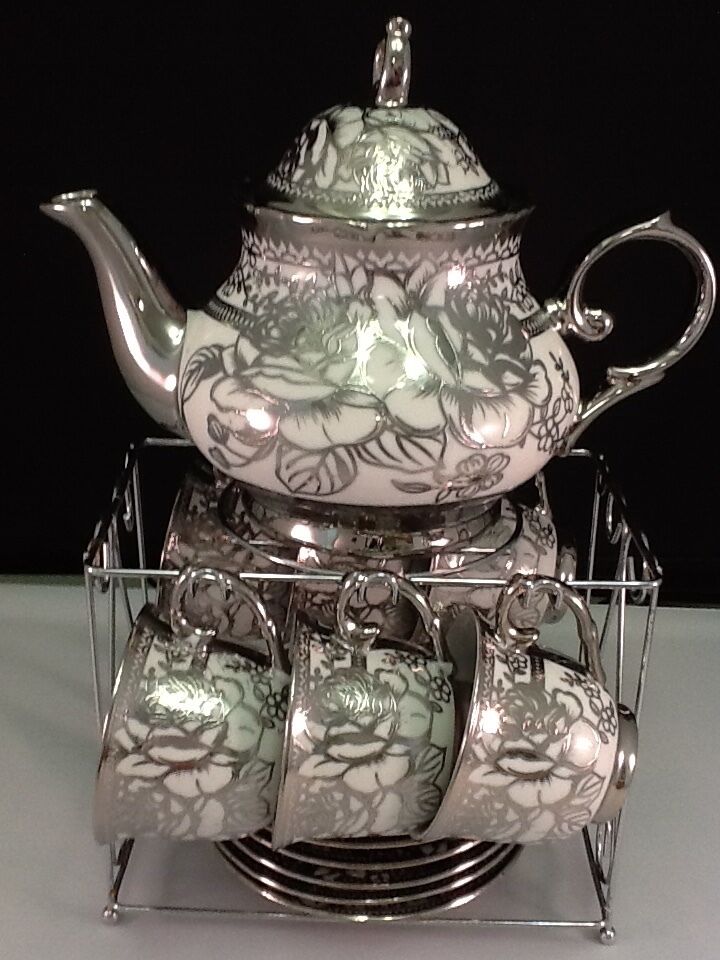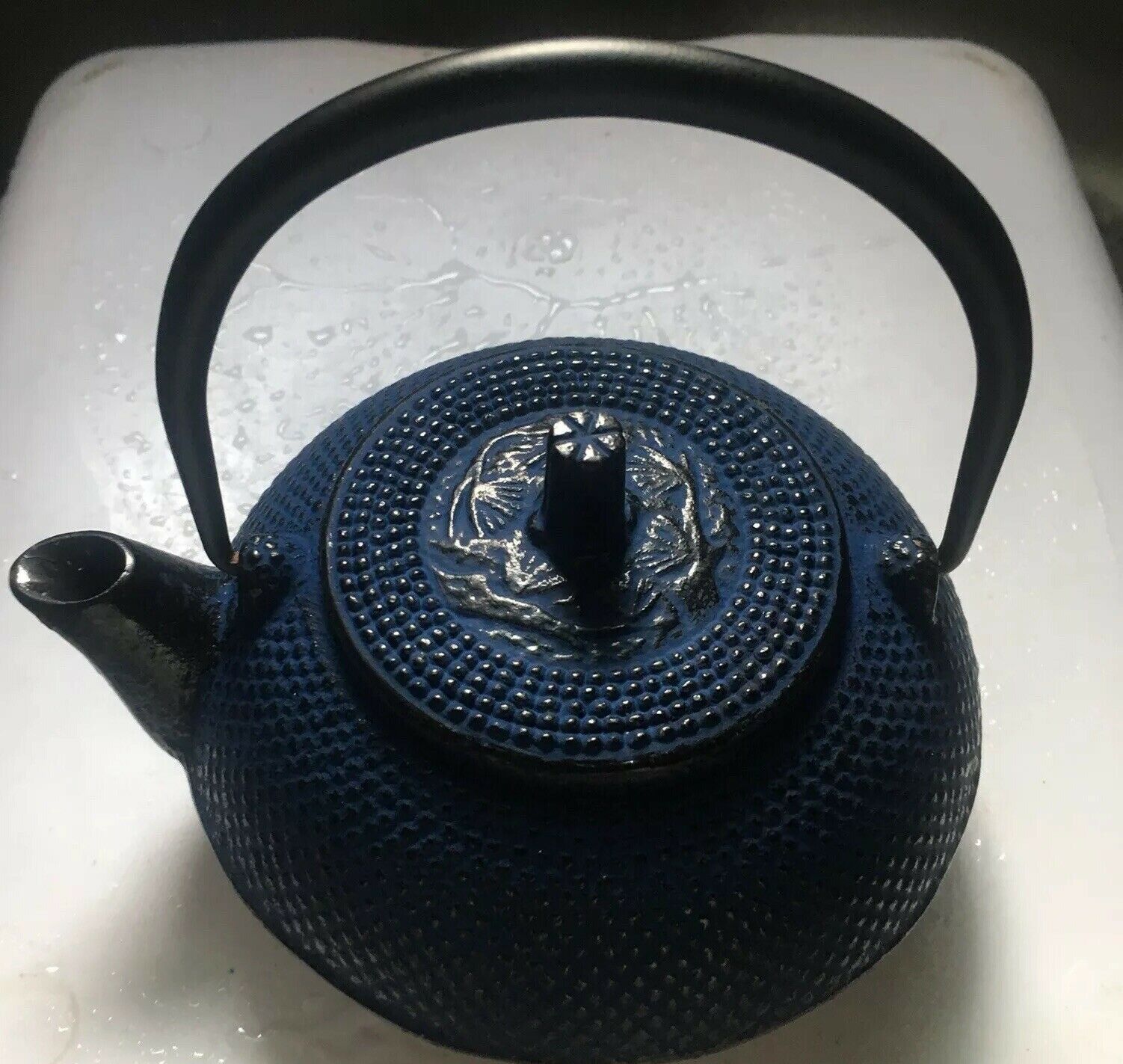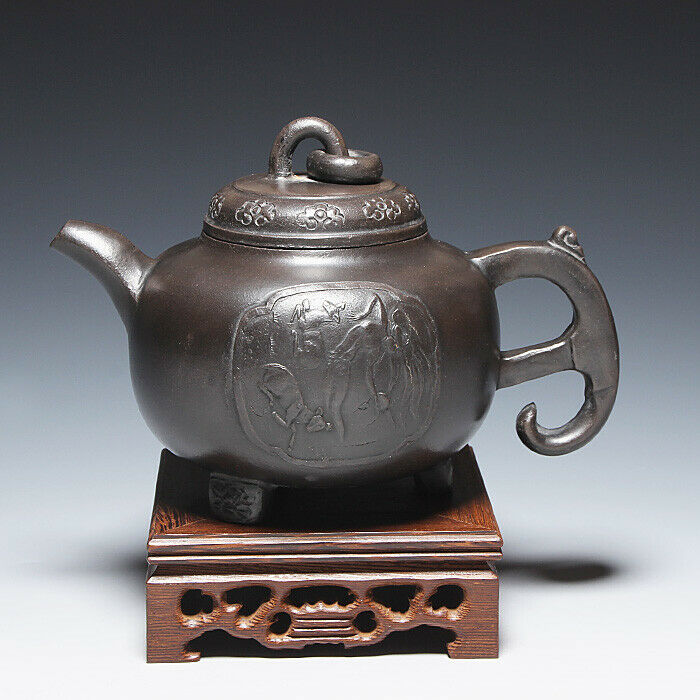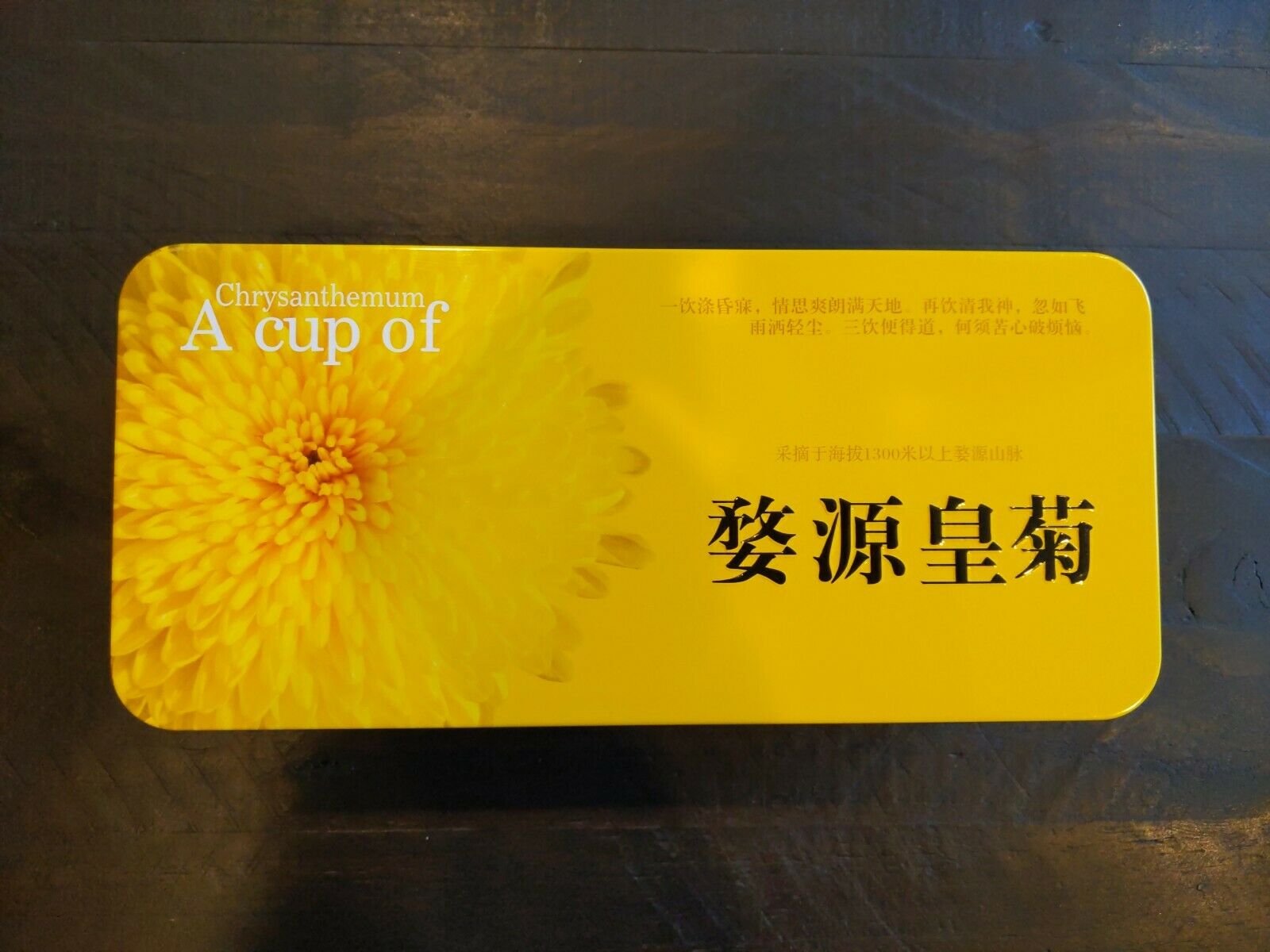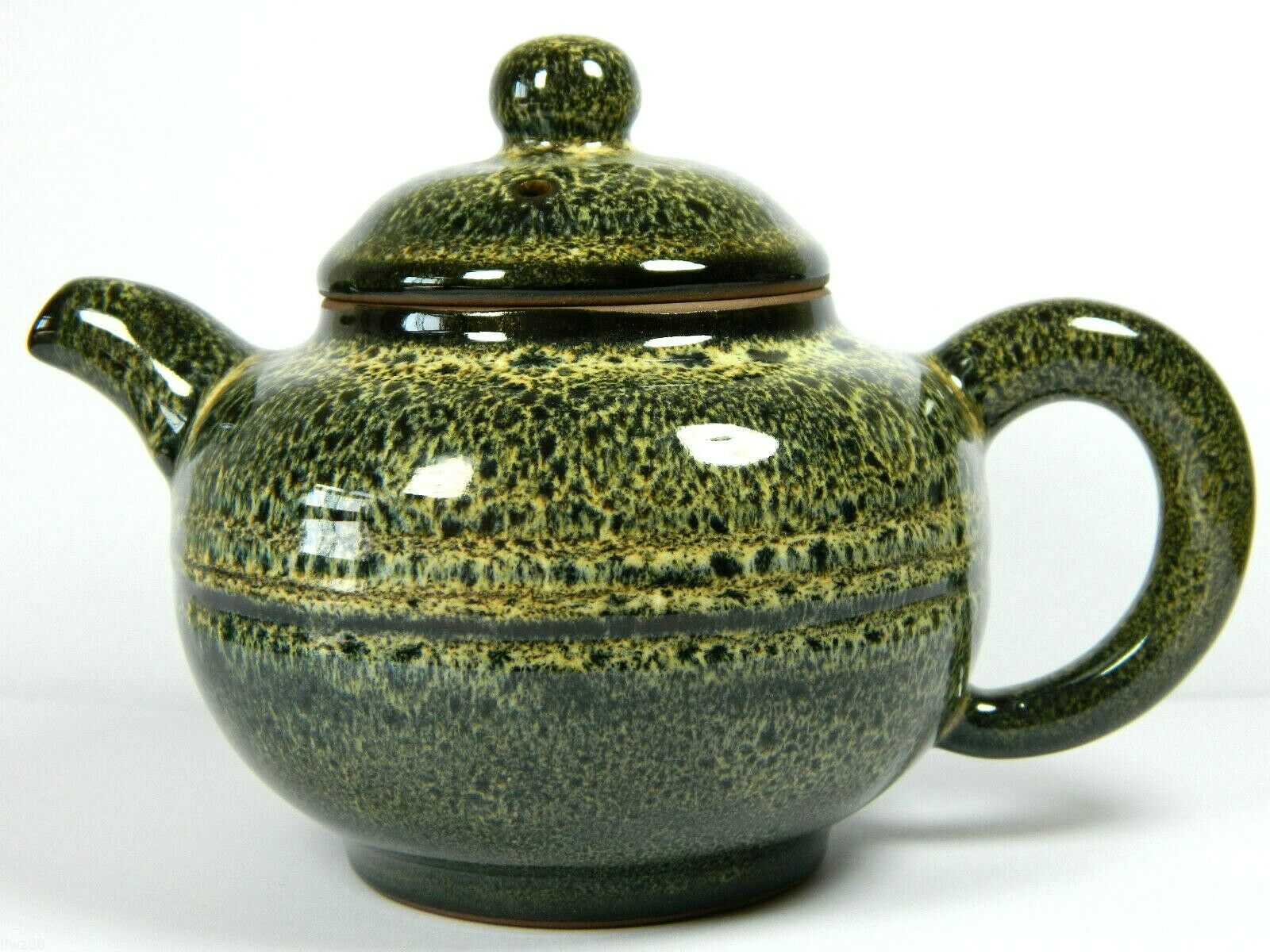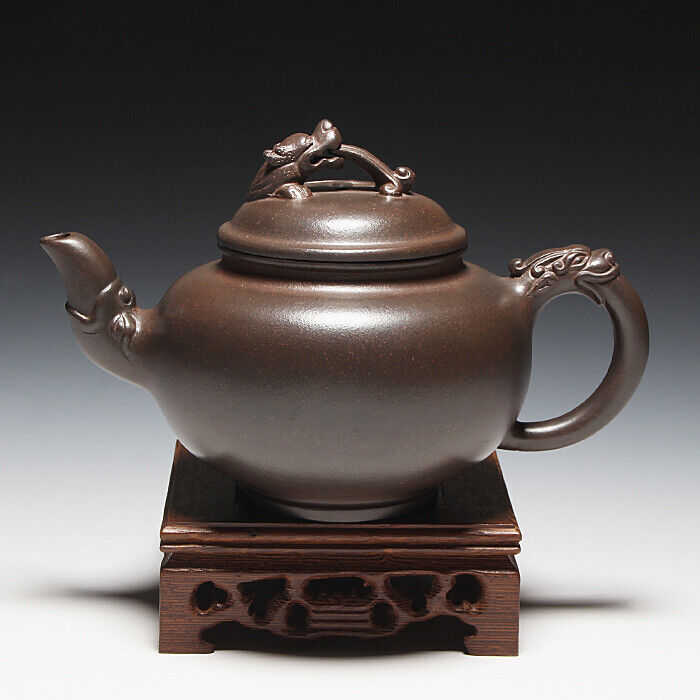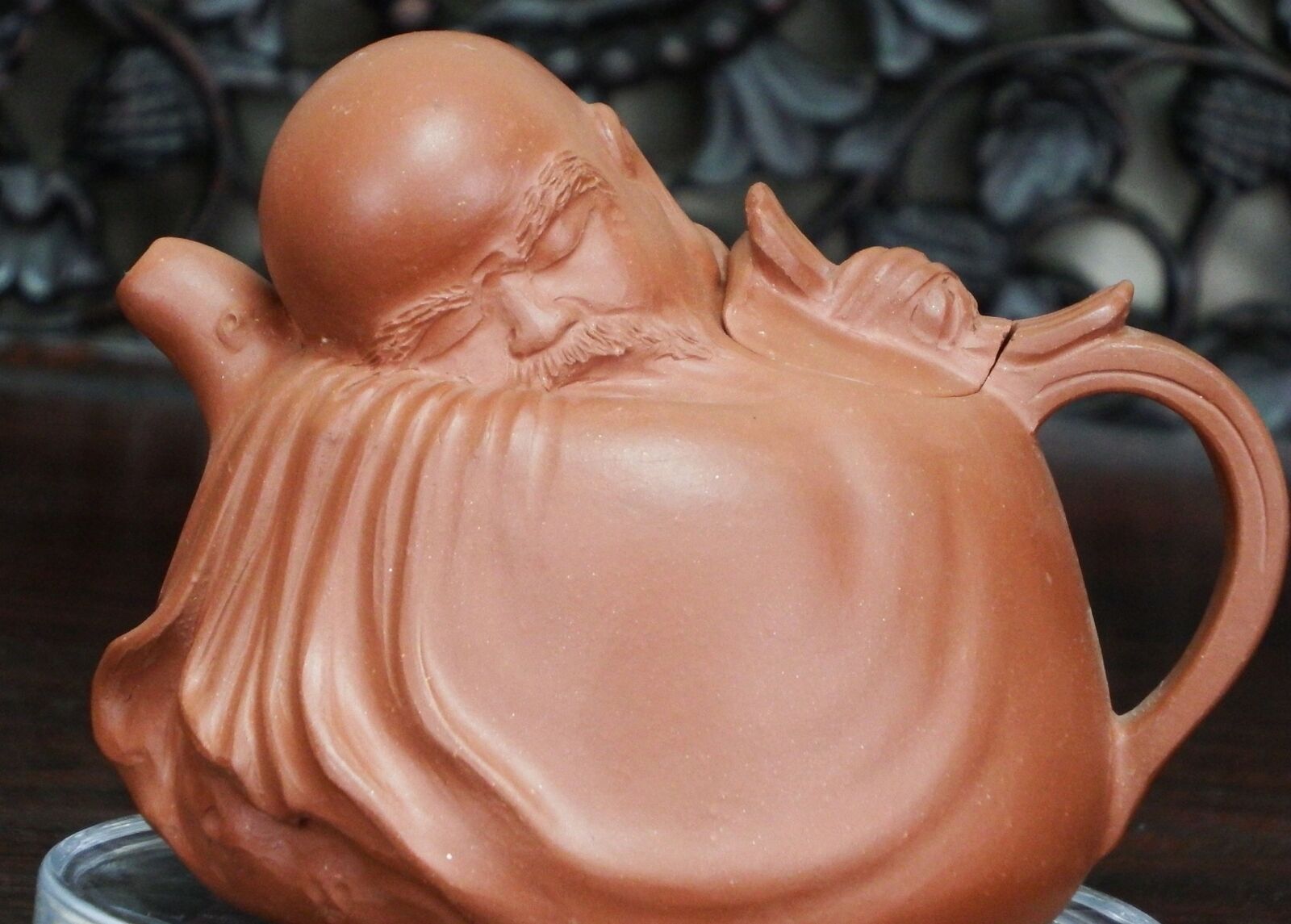-40%
Handmade YIXING ZISHA Unglazed Floral Brown Clay Pottery Teapot - NEW From China
$ 52.53
- Description
- Size Guide
Description
Handmade YIXING ZISHA Unglazed Floral Brown Clay Pottery Teapot SetBeautiful Handmade YIXING ZISHA Unglazed Brown Clay Pottery Teapot Set! Set includes Teapot with lid & 4 matching cups.
This set was wonderfully hand made and has a beautiful design and style. It has a maker's mark stamped on the bottom. Decorated with clay flowers. Teapot measures 5 5/8 inches from spout to handle and 3 1/4 inches tall.
Excellent NEW condition--no chips or cracks. Great for the Yixing Zisha, Chinese, Asian and Teapot Collectors!
HISTORY & USE OF THE YIXING CLAY TEAPOTS:
Yixing clay teapots
(
simplified Chinese
:
宜兴
;
traditional Chinese
:
宜興
;
pinyin
:
Yíxīng
;
Wade–Giles
: I-Hsing) (also called
Purple Sand
(Chinese:
紫砂
; pinyin:
zǐshā
; Wade–Giles: tsu sha) are made from
Yixing clay
. This traditional style commonly used to brew
tea
originated in
China
, dating back to the 15th century, and are made from clay produced in the region of the town of
Yixing
in the eastern Chinese province of
Jiangsu
.
Archaeological excavations reveal that as early as the
Song Dynasty
(10th century) potters near Yixing were using local "zisha" clay to make utensils that could have functioned as teapots. During the reign of the
Zhengde Emperor
(1502–1521) a monk from Jinsha Temple (Golden Sand Temple) in Yixing handcrafted a fine quality teapot from local clay. Such fine quality teapots soon became popular with the scholarly class, and the fame of Yixing teapots began to spread.
Yíxīng teapots are not actually made in the regional city of Yíxīng, but rather in nearby
Dīngshān
, also known as Dingshu, which falls within the administrative area of Yixing. Hundreds of teapot shops line the edges of the town's crowded streets and it is a popular tourist destination for many Chinese. While Dīngshān is home to dozens of ceramics factories, Yíxīng Zǐshā Factory Number 1, which opened in 1958, processes a large part of the clay used in the region, produces fine pottery ware, and has a large commercial showroom. In addition to the better known teapots, frescoes, oil and grain jars, flower vases, figurines, glazed tiling, tables, ornamental rocks, and even ornamental waste bins are all manufactured in the community.
Yixing teapots are meant for use with black and oolong teas
, as well as aged
pǔ’ěr
tea. They can also be used for
green or white tea, but the water must be allowed to cool to around 85 degrees Celsius before pouring the water into the pot. Yixing teapots absorb a tiny amount of tea into the pot during brewing. After prolonged use, the pot will develop a coating that retains the flavor and color of the tea. It is for this reason that soap should not be used to clean Yixing teapots. Instead, it should be rinsed with fresh water and allowed to air-dry. A studious tea connoisseur will only steep one type of tea in a particular pot, so as not to corrupt the flavor that has been absorbed.
Yixing teapots are smaller than their western counterparts as the tea is often brewed for only a few seconds before it is served to guests. Reusing the same tea leaves multiple times, the first brew of the tea leaf is usually used only to clean tea, teapot, and cups and is not to be consumed. Chinese people traditionally drink from cups that hold less than one ounce of liquid and are simply repeatedly filled so that they may cool rapidly but can be ingested before the tea becomes cold.

